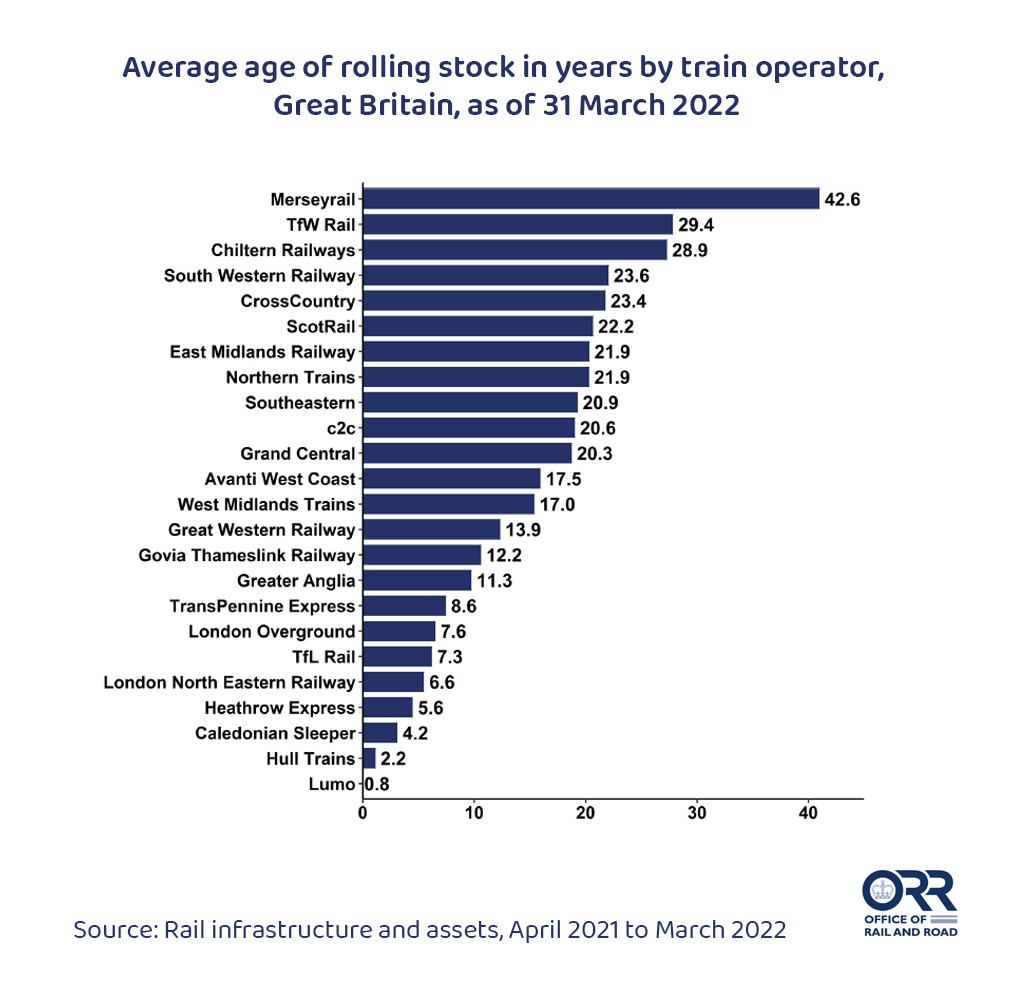The train fleet in Great Britain
The national railway fleet is comprised of around 15,300 vehicles, with 99% used by franchised operators and 1% used by non-franchised operators.
Some of the oldest vehicles are the electric Class 313 vehicles, which first entered service in 1976 and are still in use. Merseyrail has run electric Class 507 trains since they first started operating passenger services, and these were built between 1978 and 1980.
The newest vehicles were built in the last two years, such as Greater Anglia’s new Class 720 trains and the latest operator Lumo runs Class 803 AT300 trains.
In the current fleet, around three-quarters of the vehicles have been built since privatisation (1997) and just 3% were built before 1980. Over a third have been built in the last 10 years, with 2% built since the start of 2020.
Rolling stock average age
The average age for franchised operators has fallen from 19.7 years in March 2018, to 16.9 years in the most recent year (as of 31 March 2022). Over time some older fleets have been refurbished to increase capacity, and also to meet new accessibility standards.
For non-franchised operators, the average age has fallen substantially from 17.4 years in March 2018 to 9.5 years in the latest year. All of the current rolling stock for the four non-franchised operators were built from 2000 onwards.
In the latest year, Lumo had the lowest average age of 0.8 years, whilst Merseyrail had the oldest fleet with an average age of 42.6 years.
Average age (years) of rolling stock in years by train operator, Great Britain, as of 31 March 2022

What do we publish?
Every autumn we publish the annual Rail infrastructure and assets stats release which contains the latest data on the average age of rolling stock and the traction type. This is alongside other information such as the length of the network, new electrification projects in the last year, and changes to the number of stations. The release also includes additional information on why the average age has changed for each operator.
The data source for the average age of rolling stock statistics is the R2 database, which is maintained by RSSB. This is the central asset management system for railway vehicles and components. It holds details of every vehicle registered to operate on the railway in Great Britain.
What new data is available on rolling stock?
We published new data for the first time on passenger rolling stock by traction type such as electric or diesel, and the number used by each operator. This covers the passenger fleet as of 31 March 2022.
And we are looking to make improvements and additions to our data, so please email us at rail.stats@orr.gov.uk with any feedback.
What drives the changes in average age?
The average age is calculated at the end of the financial year (31 March). All vehicles in service will age by one year between one year and the next. If the average age of an operator falls or grows by less than one year, this reflects train companies introducing newer rolling stock, retiring older vehicles, or a combination of these changes.
These statistics are a measure of the age of a vehicle and because rail vehicles have a long service life, an important factor for customers is how the train is maintained and refurbished over its life to improve the experience on board the train.


